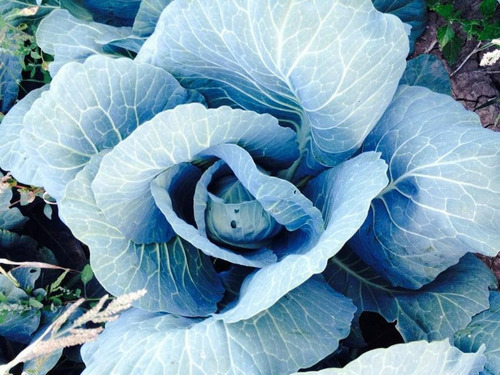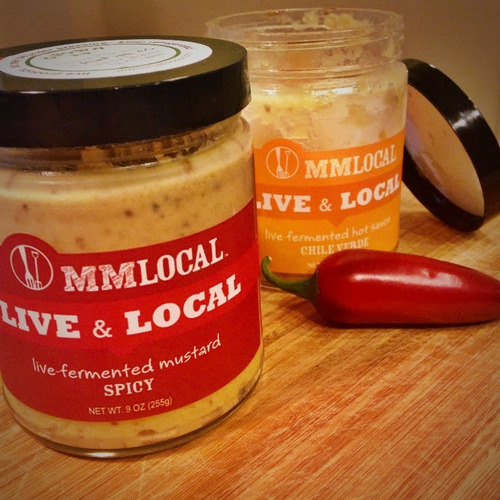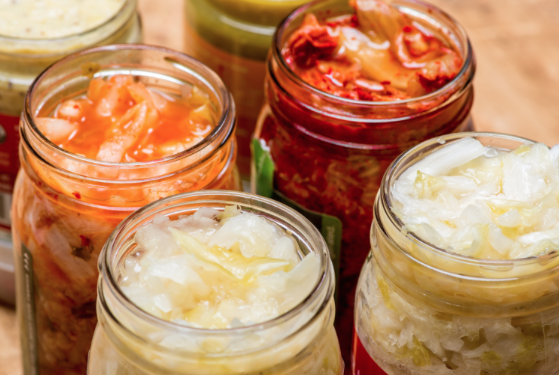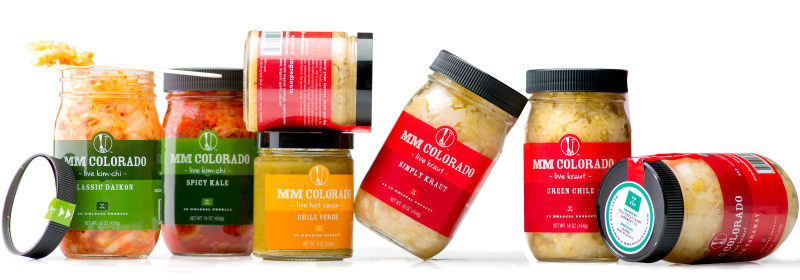Fermenting Fever
https://www.farmhandorganics.com/wp-content/themes/farmhand_old/images/empty/thumbnail.jpg 150 150 Farmhand Fermented Foods Farmhand Fermented Foods https://www.farmhandorganics.com/wp-content/themes/farmhand_old/images/empty/thumbnail.jpg
With fall comes fermentation. While produce like tomatoes, peaches and peppers thrive in the warmth of summer, early fall brassicas – including cabbages and other leafy greens – are among those crops that thrive in the late fall. As the days grow short, cabbages sweeten up in the cold, crisp weather.
Brassicas – from green and red cabbage to napa and kale – are the base of many traditionally fermented foods due to their high concentration of naturally-occurring lactobacilli bacteria. As cabbage grow, adding layer upon layer of foliage, the dozens of layers of greenery trap naturally-occuring healthy bacteria, which can thrive in the protected environment created. And high cabbage crop yields on the Front Range this fall will keep our cannery busy.
The transformation of fresh cabbage to fermented sauerkraut, kimchi or other ferments is well-documented as one of humanity’s great historical innovations. Our fermenting process is a very traditional one: using simple ingredients and controlled cool environments, we allow lactobacteria to do its thing.
Our process relies on “low and slow” low-temperature fermentation over a longer-than-normal period of time, which allows the bacteria to grow slowly (we imagine thoughtfully), yielding greater complexity to the flavor of the final product. The lacto-fermentation process is actually driven by many different strains of lactobacillus. As one species thrives, it creates greater acidity and otherwise changes the environment, creating optimal conditions for the next strain of lactobacillus to take over. One after the other, a series of lactobacilli species condition the cabbage through four distinct phases of fermentation.
The low temperature we use ensures that our ferments move through four such stages, building essential healthy bacteria and flavor. At the end of the process, we have a delicious and nutritious mix of carefully-cultivated lactobacilli. The resulting ferment – whether kraut, kim-chi or a delicious hot sauce – has been shown to actually have more nutrients available for human absorption than even raw cabbage! Meanwhile the live probiotic cultures promote gut health, digestion, and nutrient absorption for a happy and healthy human biome.
At the end of the day, we love our ferments because of their exceptional flavor. From classic krauts and kim-chis to hot sauces, we use our live and local ferments as condiments, side dishes, delicious toppings and more. And they leave us feeling great!
To make sure you get updates on our latest and greatest additions to the MM Local ferment family and our ferment process, makes sure to follow us on Facebook!
Daikon Daze

Part of what makes the MM Local process special are the new ferment recipes that we develop over the course of the year to respond to local crop surpluses. One of this season’s newest fermented products uses delicious daikon radish, a clean – and cool – tasting staple in Japanese and Korean fermentation traditions. Using beautiful fresh daikon from Wyatt at Red Wagon Farms, we combined a few classic ingredients to make a simple pure-daikon ferment and a a classic Daikon Kim-chi.
Throw the kim-chi in home-made fried rice or an omlette for a fresh, crisp and spicy addition. The ferment’s bright flavor stands alone, but is great on fresh vegetables, as an appetizer, or fresh out of the jar!
Saucy Sisters

Along with our fermented foods, we have a couple (literally) hot little numbers in our ferment collection: Live Chile Verde and Live Spicy Mustard. The Chile Verde uses a hearty base of cabbage to set the stage for our fermented peppers to really shine. Throw this one on your eggs in the morning, in a burrito, and really any other place that hot sauce can and should be used! Use our Spicy Mustard with a grilled bratwurst and even a little MM Local Kraut, and you’ll never go back to regular mustard again. And yes, that’s a challenge. Both of these products carry serious flavor for condiments, along with all of the probiotic benefits that our other ferments carry.
- Posted In:
- Our Story



